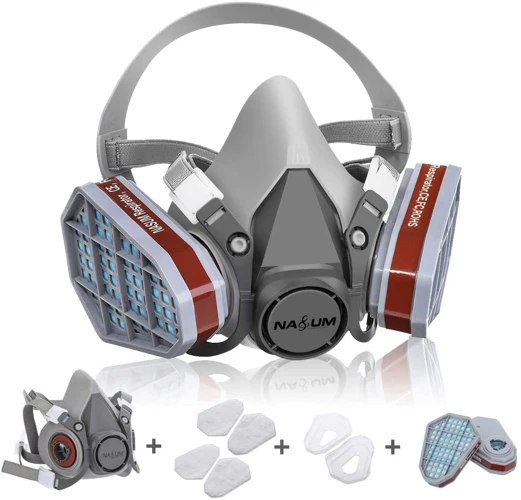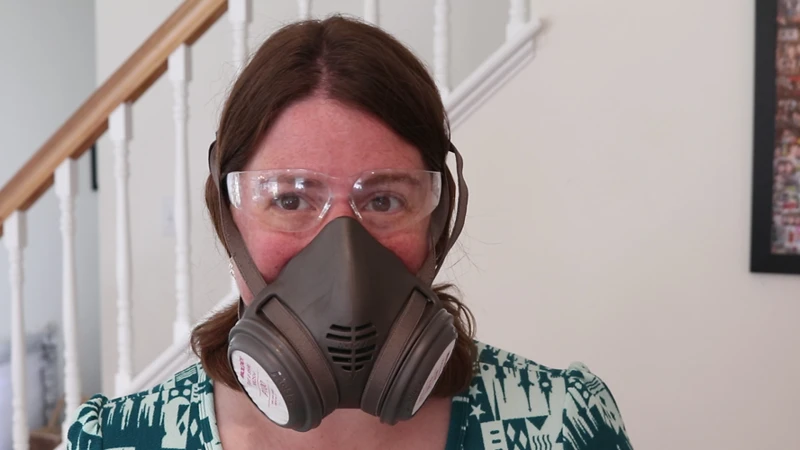When we consider our health and well-being, the quality of the air we breathe plays a pivotal role. Indoor air quality, specifically, is crucial because many of us spend a significant portion of our time indoors. The air within our homes and workplaces can harbor pollutants that may lead to or exacerbate respiratory health issues.
Importance of Clean Air for Respiratory Wellness
A fundamental aspect of maintaining respiratory health is ensuring the air we inhale is as clean as possible. Clean air is devoid of harmful pollutants and particulates that can trigger allergies, asthma, and other respiratory conditions. It’s not just a matter of comfort; it’s about preventing health risks that can have long-term consequences.
Common Indoor Air Pollutants and Their Effects
From dust mites to mold spores, common indoor air pollutants are varied. Chemicals released from synthetic materials, tobacco smoke, and even cooking can accumulate, impacting our lungs and overall respiratory wellness. Understanding these pollutants is the first step towards mitigating their effects.
The Impact of Paint Fumes on Indoor Air Quality
One of the more insidious contributors to indoor air pollution are paint fumes. These emissions can significantly degrade indoor air quality, affecting the health of occupants. The relationship between paint and air quality is complex but crucial to understand for maintaining a healthy environment.
Paint Fumes and VOCs: Health Risks
Paint fumes are comprised of volatile organic compounds (VOCs) which can pose numerous health risks. VOCs and health are closely linked, with exposure leading to symptoms ranging from headaches to more serious respiratory issues. These compounds can linger long after the paint has dried, stressing the importance of addressing them promptly.
How Paint Affects Air Quality in Homes
When paint is applied, it releases fumes that can decrease the quality of the air we breathe at home. These emissions can cause immediate discomfort, such as eye, nose, and throat irritation, and potentially lead to chronic respiratory problems if not properly managed with effective ventilation solutions.
Improving Ventilation Systems for Healthier Living Spaces
Combatting the negative effects of indoor air pollutants like paint fumes involves enhancing the ventilation systems in our living spaces. Proper ventilation can dilute and remove airborne contaminants, thereby improving the overall air quality within a home.
Key Components of Effective Ventilation Solutions
- Mechanical ventilators that introduce fresh air
- Exhaust systems to remove contaminated air
- Air filters to trap particulates and allergens
Home Improvement: Upgrading Your Ventilation System
Home improvement efforts often focus on aesthetics, but upgrading your home’s ventilation system is a critical investment for your health. A well-designed system can ensure a continuous supply of fresh air, helping to maintain a safe and comfortable living environment.
Strategies for Reducing Exposure to Paint Fumes
Reducing exposure to paint fumes is essential, especially during and after home renovation projects. There are several strategies homeowners can employ to minimize the risks associated with painting.
Painting Safety Tips for Homeowners
Adhering to painting safety tips can drastically reduce the risk of inhaling harmful fumes. These tips include using protective gear, ensuring rooms are well-ventilated during the painting process, and allowing for adequate drying time before occupying the space.
Choosing Eco-Friendly Paint Options
Opting for eco-friendly paint options can also play a significant role in maintaining indoor air quality. These paints typically contain lower levels of VOCs, making them a healthier choice for both the environment and our lungs.
Enhancing Air Purification Post-Painting
Even after the application of paint, proactive measures are necessary to enhance air purification and safeguard against lingering fumes. Employing the right strategies can make a significant difference in the air quality of a newly painted room.
Best Practices for Air Purification After Painting
Best practices for air purification after painting include keeping windows open, using air purifying devices, and maintaining clean air filters in HVAC systems. These steps can help accelerate the removal of any residual fumes.
Technologies and Tips for Cleaner Indoor Air
Advancements in technologies offer additional options for ensuring cleaner indoor air. From HEPA filter-equipped air purifiers to smart ventilation systems that monitor and adjust air quality, these tools can be invaluable for anyone concerned with maintaining a healthy indoor environment.
Practical Ventilation Solutions for Paint Projects
Implementing practical ventilation solutions can mitigate the risks associated with paint projects. Whether it’s a DIY job or a professional undertaking, adequate ventilation is key to preventing the buildup of harmful fumes.
How to Maintain Adequate Ventilation During Painting
Maintaining adequate ventilation during painting can be achieved by keeping doors and windows open, using fans to circulate air, and taking breaks to allow the space to air out. These simple steps can significantly reduce the concentration of paint fumes in the air.
Long-Term Ventilation Strategies for Freshly Painted Rooms
For long-term ventilation, consider the installation of air exchangers or upgraded HVAC systems with high-quality filters. These solutions can ensure that freshly painted rooms remain safe and comfortable for occupants in the days and weeks following a painting project.
When embarking on a painting project, it’s critical to consider not only the aesthetics but also the practical aspects such as paint maintenance and the environment you’re working in. If you’re using epoxy paint, our guide on epoxy paint maintenance tips can help you keep your surfaces looking pristine for longer. For those who prefer working with latex paint, our step-by-step tutorial on how to apply latex paint to walls will ensure a smooth and even application. Furthermore, proper ventilation is key to any painting project, especially to safeguard your respiratory health. Don’t overlook our DIY recommendations on ventilation while painting to ensure your workspace is safe and fume-free.
Conclusion: Prioritizing Health with Proper Ventilation
In conclusion, the relationship between indoor air quality and respiratory health cannot be overstated. Paint fumes, as a common indoor pollutant, pose significant health risks that must be addressed through improved ventilation systems, safer painting practices, and the use of eco-friendly paint options. By adopting these strategies and utilizing air purification technologies, we can ensure our homes are not only beautiful but also safe havens for breathing easy. Prioritizing health through proper ventilation solutions is an investment in our well-being and the quality of our indoor environments.



